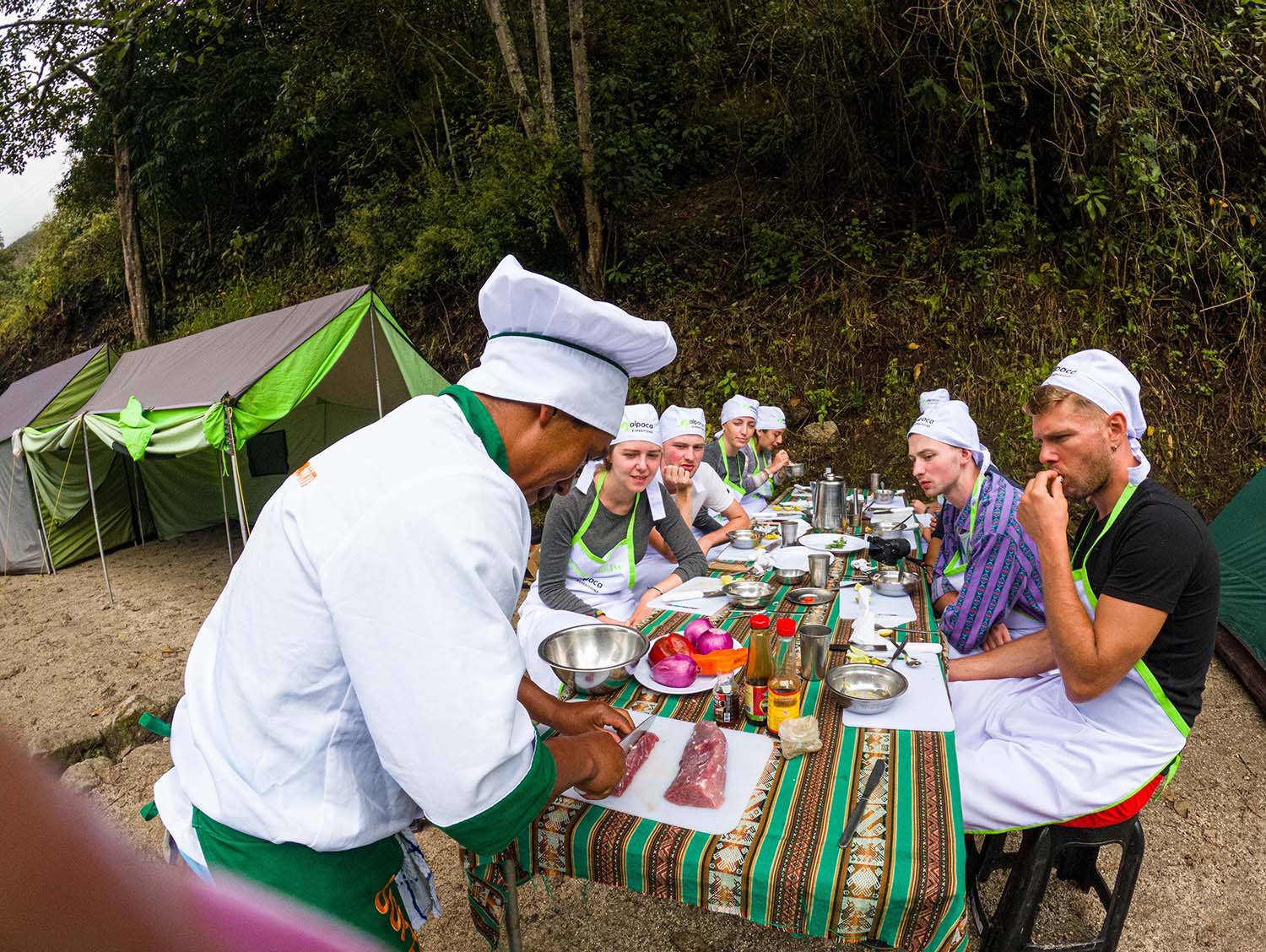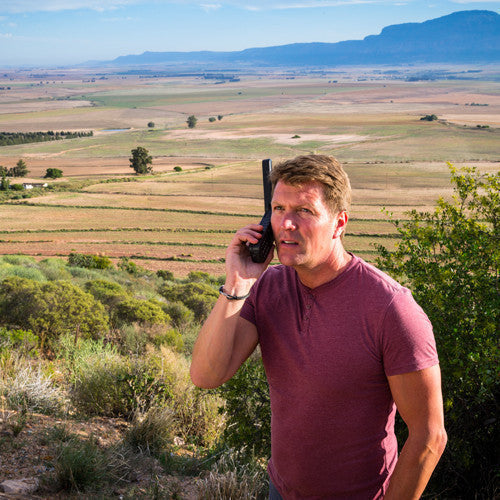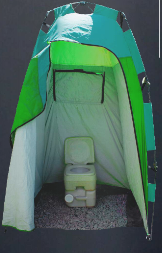Frequency ask
and questions
We know you want to have the best vacation you can in the magnificent country of Peru. We understand that you are hoping to find the perfect trek that will take you on an amazing experience to Machu Picchu. At Alpaca Expeditions, we do our very best to help you choose which route is best for you, but no matter which trek you do with us, we assure you that you will have an amazing time.
Below are descriptions for each tour and trek:
Classic Inca Trail Trek 4D/3N:
The total distance is 45 km/26 miles. The highest elevation is called Dead Women’s Pass at 4,215 m/ 13,829 ft and the lowest elevation is Aguas Calientes, at the end of the trek, at 2,000 m/ 6,562 ft.
Considerations: There is no other trail that can be compared with this one, for many reasons: historical importance, gorgeous nature, fascinating ecosystems, and this is the only trail that brings you through the Sun Gate, into Machu Picchu. This trail is 800 years old, and was built by the Incas to travel from Cusco to Machu Picchu. It is considered to be the most important trail, that only the nobility were allowed to use during the Inca period. The path is paved with stones and stairs. Many Inca sites can also be visited along the way. The different ecosystems that you will encounter are stunning.
Many people talk about how crowded the Inca Trail is, especially with 500 people trekking per day. This is not necessarily true, due to the varied locations of the campsites. Alpaca Expeditions always chooses different campsites that allow you to experience more nature than crowds. Our guides get an earlier start than everyone else to make accommodations.
Inca Trail Classic Private Service 4D/3N:
This is the same trail as the group service mentioned above. The difference is in the level of service. This service is solely for you. You will have a private guide, a private chef, and private porters to carry everything for you. Trekking the Inca Trail is the experience of a lifetime. It is a challenging hike and if you choose to experience it on your own, or with close friends, this could be your best option. The food can be catered to your needs if you have a special diet. We also include foam and air sleeping pads, pillows, private toilet tents, warm showers and some alcoholic drinks. The final lunch is also included and will be at Indio Feliz, the best restaurant in Aguas Calientes.
The five day Inca Trail follows the same trail as the four day Inca Trail. However, they camp at different campsites than our four day group. Taking this trail allows for walking at a slower pace, which gives more time to enjoy your surroundings. You will walk shorter distances each day, and spend more time at the Inca sites. This trek also minimizes the chance of running into crowds. The highlight of this trek is camping at Phuyupatamarca, on the third night, where you will see stunning views of the surrounding mountains, such as Salkantay, Machu Picchu peak and Pumasillo. Another highlight is that you will arrive at Machu Picchu twice. On the fourth day, at 4:30 p.m., you will have the opportunity to take pictures of these famous ruins with the sunset in the background. Again, on the fifth day, you will be able to see the sunrise in the early morning, before the mists have lifted. This trek is highly recommended for families with children.
Inca Trail with Camping 2D/1N:
We have created this unique program, offered for a limited time. You will have the opportunity to camp in the Andes, along the amazing Inca Trail, with spectacular views of the surrounding valleys, and explore the 15 km/9.3 miles to Machu Picchu. Upon arrival at your campsite, you will enjoy the sunset, and get the chance to see the sunrise on the second day.
The differences between this trek and the Classic 2 Day are:
- Camping at Puente Ruinas, at the foot of Machu Picchu, with views of Machu Picchu and Huayna Picchu
- You will have porters, as well as a professional chef, providing breakfast at the trail head, lunch, dinner on day one, and breakfast and lunch on day two.
The total distance of this trek is 15 km/9.3 miles. The lowest elevation is 1,900 m/6,234 ft, which is at the trail head at Km 104. The highest point is the Sun Gate, at 2,700m/8,858 ft. This trek travels to places at elevations lower than Cusco. Altitude sickness should not be a worry because the trek is located nearer the Amazon Jungle, where there is plenty of oxygen and humidity.
In just two days, you will be able to explore the Andes and arrive at Machu Picchu twice – once for the sunset, and again for the sunrise on the second day. This tour includes an accommodation at a hotel in Aguas Calientes. Aguas Calientes is at an elevation of 2,600 ft., lower than the Machu Picchu complex. It is in such a remote area that it may only be reached by train.
This trail combines the Salkantay Mountain Trek and the Classic Inca Trail Trek. This is the best way to explore the Andes’ history and nature. The different ecosystems that you will pass through are magnificent, especially when you are coming from the high mountains of Salkantay, and then into the Cloud Forest of the Classic Inca Trail to Machu Picchu.
This total distance of this trail is 84 km/53 miles. You will reach the highest point of Inca Chiriaska Paso on the third day of the trek which is right by Salkantay Glacier peak (5,100 m /16,732.28 ft). The second highest elevation is Dead Women’s Pass, along the Classic Inca Trail.
This trail is good for those who really enjoy the outdoors and nature. It does include more time spent in the Andes.
Salkantay Trek To Machu Picchu 5D/4N:
This alternative option is considered to be one of the best options. The total distance is 59 km /36.6 miles. It can be dusty and slippery in the dry season, or muddy and slippery in the rainy season. Either require good, waterproof hiking shoes. The highest peak is Salkantay Pass, which is above 4,650 m/15,255 ft, and the lowest elevation is in Aguas Calientes at 2,000 m/6,562 ft.
This trail is a bit more adventurous, with a great deal of nature to see. It is bit more challenging, but it offers fascinating history. You will pass through various ecosystems, and go directly into Aguas Calientes by foot.
Considerations: On your third night, you will stay at our best camping site, which overlooks Machu Picchu. You will get there during daylight hours to enjoy the sunset over the ruins, and then have the opportunity to see the sunrise the next morning.
Salkantay Trek To Machu Picchu 4D/3N:
This is the same route as described above. However, it takes only four days to cover the same trek. The main difference is that on day two you will take a van for a portion of the trail to get to our campsite for the night. The campsite at Llacatapata (campsite overlooking Machu Picchu) is not included in this trek.
Lares Trek To Machu Picchu 4D/3N:
The Lares Trek goes through some of the most amazing countryside of the Andes. It passes through indigenous villages, where we will learn about the lifestyles of the local people, who still practice the ancient Incan traditions. We will see blue lagoons, free range llamas and alpacas and a potato farm. The highest elevation is Condor Pass, at 4,700 m/15,420 ft. The total distance traveled is 35 km/21.748 m. An important consideration is that the temperature sometimes goes below zero while at the campsites.
An Alternative Trek is an alternative to the Inca Trail. Due to the strict permit process for the Inca Trail, these first became popular for those who were not able to secure a permit. Now, people recognize some real advantages to the alternative treks.
Compared to the Inca Trail:
Of course there are several differences between the Inca Trail and other treks. One being, the amount of ruins you pass along the way. However, the main difference is that the Inca Trail is the only hike that allows you to walk directly through the Sun Gate, into the Machu Picchu. Everyone else must enter through the main gates of the citadel. Once inside, you are always able to walk to the Sun Gate and get that view from above (for free), but it will not be your first view of the ruins.
The alternative treks that end at Machu Picchu, will all spend one evening in a hotel in the town of Aguas Calientes, the village below Machu Picchu. Your Machu Picchu day will begin with a bus trip from Aguas Calientes up to the ruins (about 25 minutes), and these buses are first come, first serve. It is possible to hike from Aguas Calientes to Machu Picchu, but you will still need to enter through the main gate.
Pros of the Alternative treks:
Even though they are growing in popularity, it is still likely that you will hike through the Andes with only your group. The roads are not crowded with tourists, and you are visiting places that can only be reached by foot.
Also, for those interested in nature, these treks are often more beautiful. Each one offers something special, like heading to Salkantay Pass by the glaciers, or to local villages with the Lares Trek. Treks like Choquekiraw or Vilcabamba visit other tremendous and important Incan citadels.
Our Alternative Treks:
Salkantay Trek To Machu Picchu 5D/4N: Probably the most popular alternative trek. This is a bit more difficult than the Inca Trail, as the days are longer and there is more hiking. You will experience many different micro-climates as your scenery changes drastically, each day. This includes our best campsite on the third night, overlooking Machu Picchu.
Salkantay Trek To Machu Picchu 4D/3N: Essentially, this is the same path as described above, but it skips our campsite on the third night, and spends a small amount of time in a car to get you to Aguas Calientes on day three.
Lares Trek To Machu Picchu 4D/3N: This trek is famous for spending time with local people, at villages that can only reached by foot. You will spend more time in the Alpine, so it is a bit colder, but beautiful.
Hucchuy QOSQO 3D/2N: This trek is easier, with only a day and a half of hiking. You will not skip any of the beauty, as you pass by waterfalls and through a small canyon. This is great for those who want to experience camping, but only for one night.
Beautiful Treks That Don’t Go To Machu Picchu
Choquekiraw Trek 5D/4N: You will hike to Choquekiraw, and spend more than a day experiencing this huge complex, that is larger than Machu Picchu.
Trekking Packing List
- Passport (must match the one you used to book with us)
- Valid Green ISIC Card for all those booked as students
- Day pack (not more than 25L, or you will need to check it for the Machu Picchu tour)
- Water Storage: Camel back or bottles (recommended two to three liters of water storage)
- Waterproof, lightweight hiking shoes/boots
- Sleeping bag (-10 degrees celsius) – can rent from us
- Headlamps
- 3-4 quick dry t-shirts
- 1-2 long sleeve layers
- 2 hiking/yoga pants
- Fresh undergarments for each day
- Fleece
- Warm jacket for nights
- Comfortable shoes for the campsite
- Rain jacket and pants
- Waterproof gloves
- Sunglasses
- Toiletries: Toilet paper, toothbrush, toothpaste, hand wipes, hand sanitizer, sunblock, chapstick
- Bug spray
- First Aid: band aids, mole skin, Diamox, Tylenol, any medications
- Camera with batteries
There is no down season for Machu Picchu, so the ruins will always be crowded. They are best seen early in the morning before the huge crowds come, but there is no real way to avoid other tourists. The citadel is a huge area, with lots of terraces. Good running shoes or hiking boots are preferred for your tour. If you are doing one of the extra hikes, Huayna Picchu or Machu Picchu mountain, you will want hiking boots with good traction.
Please remember that you will need your original passport to get inside the ruins. No large bags are allowed in the park, so you will need to leave them at your hotel, or check them at the front gate. The park rangers are diligent about rules, so please make sure to be courteous and respectful.
Many people are surprised to learn that Machu Picchu falls into a subtropical climate category. It is filled with orchids, bromeliads and some pesky insects. Also known as the Cloud Forest, Machu Picchu is surrounded by higher mountain peaks, frequently shrouded in mist. This is perhaps one of the reasons that the Spanish never discovered it. It is considerably lower altitude (hotter and more humid) than Cusco and many of the other treks.
The weather changes often in Machu Picchu. Typically, during the dry season (April-November) the early mornings are foggy, and can be chilly. In the late mornings, the clouds clear and the sun comes out, so it can get quite hot. Layers that you can peel off or add on, are best. Sun protection, insect repellent and a good hat are essentials. However, please keep in mind that sometimes there is still rain in June and sunshine in December. A rain poncho is highly recommended, no matter what season you visit. When it rains, the ancient stones can become slippery, so having shoes with a good tread is helpful, and perhaps, a rubber-tipped walking stick.
The rainy season is from mid-November to mid-April, with February being the wettest month. The Inca Trail is closed during February, although the Machu Picchu ruins are still open.
Of course, weather is unpredictable. No matter what month you are in Machu Picchu, please make sure that you have rain gear, including a waterproof jacket, pants, poncho and waterproof gloves.
Cusco is located in the southeast area of Peru, and has one of the highest elevations of all the cities in South America (3,400 m/11,200 ft). The city has a lot to offer, including historical sites, museums, restaurants, a great nightlife and shops. Cusco is full of cobblestone streets, so good walking shoes are a must. You can easily walk from place to place, but taxis are plentiful and safe. The airport is only a 10 minute drive from the main square.
Cusco is also surrounded by the beautiful Sacred Valley, which is a little lower in altitude. Some people prefer to head down to the valley first, to slowly adjust to the altitude. The valley has a lot of beautiful places to visit, including Pisaq, Urubamba, Ollantaytambo, Maras/Moray, Tipon and many others.
Cusco is known to have two seasons – the dry season and the rainy season. The dry season is from May through September and the rainy season is from October through April. In recent years, the weather has not been predictable, so we have experienced rain during our dry season and sunshine during the rainy season. Be prepared for any type of weather.
The temperature does not vary much throughout the year. The days will typically be between 15-20 degrees Celsius (60-70 degrees Fahrenheit). However, when the sun goes down, so does the temperature, due to the decrease in oxygen levels at this high altitude. You will need a warm jacket for the evenings in the city because it will fall to 1-5 degrees Celsius (35 – 40 degrees Fahrenheit).
If you are heading down into the Sacred Valley directly from the airport, expect warmer temperatures on both ends (about 10 degrees warmer).
NOTE: Please don’t go by what you read on weather-predicting websites regarding rain in Cusco. Cusco is also the name of the entire municipality, including all of the Sacred Valley, which includes many micro-climates. These sites are never correct for the area. The region is too big and there are many weather changes. Be prepared for anything!
Everyone Must Bring Their Own Day pack
Our team of porters will carry your duffel bags from campsite to campsite. These need to be packed up each morning, and will be waiting for you at your evening campsite. You will need to carry your own day pack while hiking, so these packs should be as light as possible. You only need the essentials as outlined below.
Water Carrier: At each meal we will refill your water supply with fresh, clean water, but you need to have a camel back or water bottles to carry enough for a few hours. You should always have between two and three liters of water to drink constantly. Hydration is the key to feeling well in the mountains.
Snack: Each day we will supply a snack for you (piece of fruit, cookie or chocolate). Feel free to also bring some snacks of your own, but don’t overdo the amount because this can add unneeded weight.
Layers: Most of your hiking days will be warm enough for short sleeves, but certain portions of each trek are at higher altitudes (especially during the Lares trek), so they will be colder. A fleece is always handy to have in your bag. Hat and gloves are advised, as well.
Rain Gear: While May through September are typically dry months, rain clothes including a jacket, pants, and waterproof gloves, are always useful. Rain can happen any time.
Sun Items: Hopefully there will be more sun than rain. Be sure you have a sun hat and sunscreen. Aguas Calientes and Machu Picchu are almost always hot.
Bug Spray: You will want a strong insect repellent with deet.
Camera: Be sure to bring one with extra batteries. There is no place to charge electronics, in the mountains.
Music: Whether its an iPhone or walkman, having something to motivate you during the hard parts of the hike can be helpful.
Toiletries And First Aid: Hand sanitizer, band-aids and Tylenol are always advised.
Toilet Paper: While trekking you may need to use the Incan Toilets (go behind a bush). Make sure that you have a small bag to dispose of any paper used.
Wallet And Passport: It is safer to keep these items on your person.
As far as the size of your day pack – Machu Picchu does not allow bags larger than 25L inside the citadel. This will be more than enough weight to allow for everything you will need while hiking. If you prefer a bag that is larger, it will not be a problem. You will just need to check the bag at Machu Picchu, at a safe area. It will cost three or five soles, depending on which area you choose.
Enjoy the Best Chefs in the Mountains
We include all meals and snacks for our treks, up until the last lunch (after your tour of Machu Picchu). For your last lunch in Aguas Calientes, or for all train tours, you will choose from the many restaurants in Aguas Calientes.
You may be curious about the quality of the food provided by Alpaca Expeditions. It is prepared by a chef in a small tent, on a stove. Check out our reviews, and you will recognize how pleased our trekkers are with their meals. Our professionally trained chefs prepare the best breakfasts, lunches, dinners and snacks. After completing each day’s trek, you will enjoy a social happy hour, before being treated to a delicious buffet dinner, that will undoubtedly exceed all your expectations of food on the Inca Trail.
All food is prepared from fresh ingredients, purchased in the Cusco local market. The porters transport the food and the chefs prepare it. We do not use any canned or re-hydrated food. It is all fresh, healthy and delicious!
Do you have special dietary needs? No problem! We can cater to vegetarians, vegans and all food allergies.
There is plenty of water provided during each trek. We take tap water from each campsite and boil it for 15 minutes, so it is safe to drink. You only need to carry enough water to get you to each stop. You can refill your bottles at breakfast, lunch and dinner.
You will be well fed on any of our Adventure Treks. There will be up to five eating opportunities a day, beginning with a big breakfast, a snack, tremendous lunch, afternoon tea, and finally, dinner.
You will be treated like royalty when you’re on the Trail! We also encourage you to bring some coca leaves.
Below is a sample menu:
Breakfast – Scrambled eggs, pancakes, omelettes, oatmeal, cereal, fruit salad, toast, orange juice, milk, tea, coffee, hot chocolate
Snack – Fruit, cookies, cereal, chocolate, candies
Lunch – Corn or mushroom soup, chicken and rice, sausage, fried fish, ceviche, steak, beans, fried rice, french fries, boiled potatoes, vegetables, salad
Happy Hour – Popcorn, fried wontons, tea, coffee
Dinner – Stuffed chicken, vegetable tortillas, pizza, spaghetti, pork cutlet, sauteed vegetables, salad
In the morning, you will only need to carry enough water to last you until the first lunch stop. At every meal, you will be provided with new, boiled water to refresh your bottles or hydration packs.
Student discounts apply to anyone who has a valid UNIVERSITY STUDENT CARD at the time of the trek or who is 17-years-old or younger. For those using a University Student Card our under 17-years-old, we need to see a copy of their card or passport at the time of booking to receive the discount.
Tips for the tour guides, cook and porters are not included in the price of the tour. Rather, it is something extra to present to your staff after you experience a special time on the Inca Trail. However, you must be aware that tips are not mandatory.
You will only have access to your duffel bags at breakfast and dinner, while at the campsite. This is due to the speed of the porters being faster than that of the groups.
After catching a bus down to Aguas Calientes, hikers will take a two hour train ride along the Sacred Valley, and arrive in Ollantaytambo. From here, an Alpaca Expeditions bus will be waiting to take hikers on the the two hour trip back to Cusco. The group will return to Cusco between 7 and 11 p.m., depending on what time the train leaves Aguas Calientes.
Huayna Picchu is the mountain located directly behind the ruins of Machu Picchu. It is approximately 300 meters higher than the ruins, and it takes two hours to hike up and down. It is recommended to plan for 45 minutes to reach the peak, 15 minutes to enjoy the view, and another 30 minutes to descend. You do not need to book in advance to climb. The tickets are $75, per person, but only 400 people can climb it per day. The 400 tickets are divided into two groups: 200 hikers are allowed to begin early, and 200 more hikers can being at 10 a.m. For both start times, tickets are provided at the Inca Road Check Point. Please speak with your guide the night before you arrive to Machu Picchu, if you are interested in this optional hike.
Hikers will arrive at the Sun Gate at approximately 6:30 a.m. and then, walk one more hour to Machu Picchu. You will then have a two hour guided tour of the Sacred City. After the tour ends, you will have approximately three additional hours to explore the ruins on your own.
The Sun rises at different times throughout the year. Times are as follows: May-September: 7:20 a.m.; October-April: 5:30 or 6 a.m. Therefore, if you choose to book your tour from May to September, it may be possible to see the sunrise. Otherwise, the Sun will be up before the group arrives at the Sun Gate.
The final day is the most exiting day for all Inca Trail hikers because we arrive at the Sacred City of the Incas. The group will get up early, and after breakfast, will hike the final two hours together. We will arrive at the Sun Gate of Machu Picchu at 7:30 a.m.
Inca Trail
- http://www.annehoang.com.au/photoblog/hiking-the-inca-trail-machu-picchu-and-huayna-picchu
- http://stampsonmypassport.wordpress.com/2013/09/03/inca-trail-pack-list
- http://theamazingamericas.wordpress.com/2013/08/22/alpaca-expeditions-review-inca-trail
- http://theamazingamericas.wordpress.com/2013/12/13/incatrail
- https://www.nomapnomad.com/the-inca-trail-day-1-with-alpaca-expeditions/
- http://www.backpacksbusesandburpees.com/blog/cuzco-the-inca-trail
- http://2britsabroad.blogspot.com/2014/04/el-camino-de-inca.html
- http://www.globalgrasshopper.com/destinations/south-america/in-pictures-the-inca-trail
- http://arlenegeres.blogspot.com/2014/05/day-3-inca-trail.html
- http://www.rtwflyers.com/2013/12/02/to-machu-picchu-and-back-again-two-short-peoples-tale
- http://pastramijuice.com/tag/alpaca-expeditions
- http://joymeetsworld.com/2014/06/a-whole-new-world-machu-picchu-peru
- http://run-wendy-run.blogspot.com/2014/01/inca-trail-2013.html
- http://atw180.blogspot.com/2012_12_01_archive.html
- http://alittlemoresalt.com/10-things-inca-trail-edition
- http://onbalance.wordpress.com/2014/11/29/inca-trail-by-the-senses
- http://four-letterword.com/2014/12/02/on-the-inca-trail-with-chef-super-mario
- http://www.nomapnomad.com/2015/01/21/the-inca-trail-day-1-with-alpaca-expeditions
- https://www.youtube.com/watch?v=nO_nijHM1mU&feature=youtu.be
- https://www.youtube.com/watch?v=mQ-jXPinuQ8
- https://worththeblisters.wordpress.com/2015/09/14/trek-part-1
- https://vacationtravellog.wordpress.com/2015/09/29/inca-trail
Salkantay
- http://herewhereweare.com/tag/alpaca-expeditions
- http://www.clearoutclearoff.co.uk/salkantay-trek-to-machu-picchu-with-alpaca-expeditions
- http://trailtopeak.com/tag/alpaca-expeditions
- http://threetotangosa.blogspot.com/2014/06/the-trek-less-traveled_25.html
- http://vimeo.com/user23307678/mountainside
- http://vimeo.com/106829703
- https://www.youtube.com/watch?v=kXL9gAGOtEQ&list=UUlCEkb3WAGaEes0TjpweESA
- http://koffervoll.blogspot.com/
- http://pintsighs.blogspot.com/2012/09/trek-to-machu-picchu.html
- http://blog.jeffverkoeyen.com/2014/02/01/travel-lares-trek
- http://www.twistofsalt.com/2014/06/lares-trek-meeting-village-children.html
- http://vimeo.com/116213793
- http://www.twoscotsabroad.com/the-lares-trek-to-machu-picchu/
- http://www.bravelittlecheesehead.com/2015/08/trekking-to-machu-picchu-lares-trek.html
- https://travelandwildlifephotography.com/lares-trek
Huchuy Qosqo
Ausangate
Choquekiraw
Sacred Valley Tour
If you have more questions, do not hesitate to contact us. You can either e-mail us, or contact us through Skype. Please see the Contact Us page on the website for more information.
Alpaca Expeditions Recognitions
ISO (International Organization for Standardization)
In the pursuit to stand out from the rest, Alpaca Expeditions has obtained four ISOs plus our carbon footprint certificate to date. These achievements result from our efforts to implement the internationally-recognized integrated management system. They also represent our commitment to all of our clients and staff of operating sustainability and responsibility in every way possible.


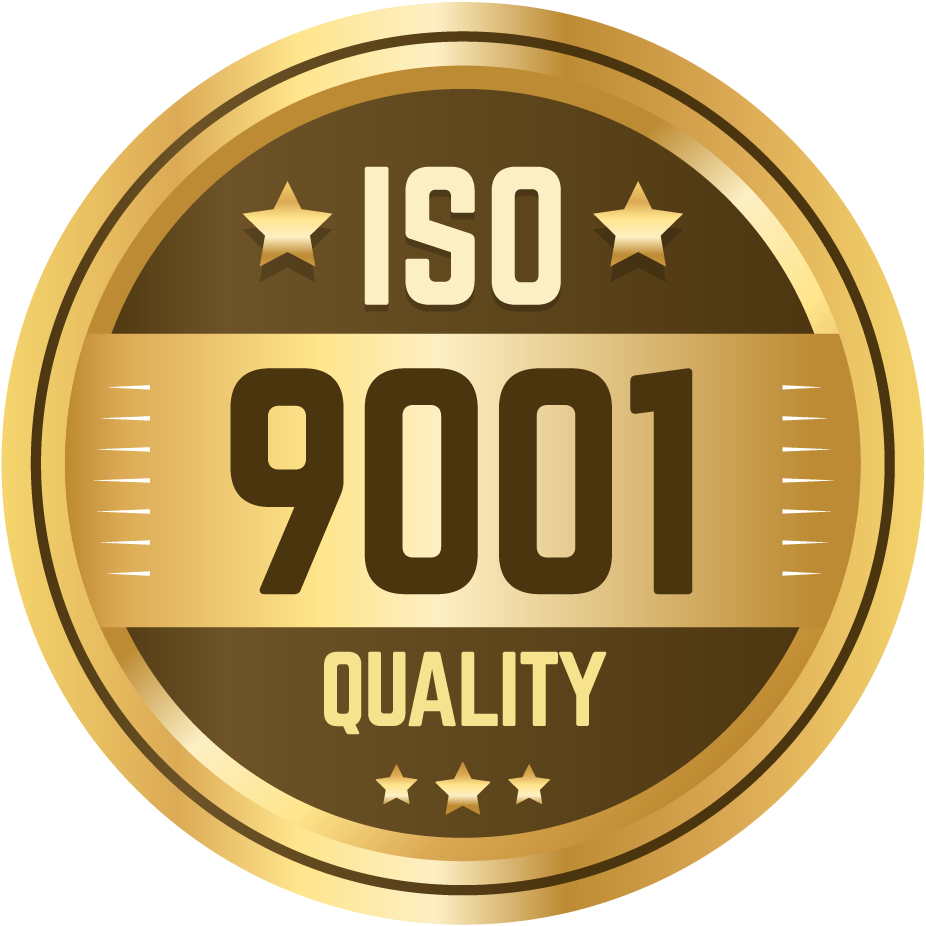
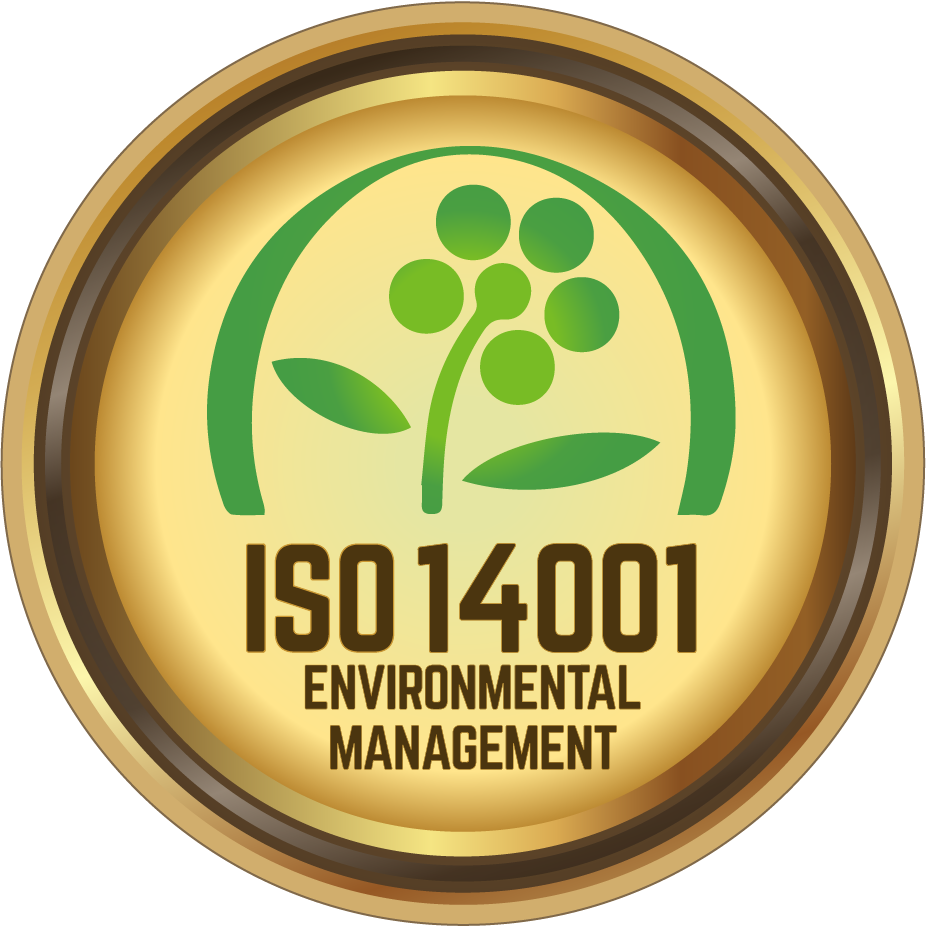
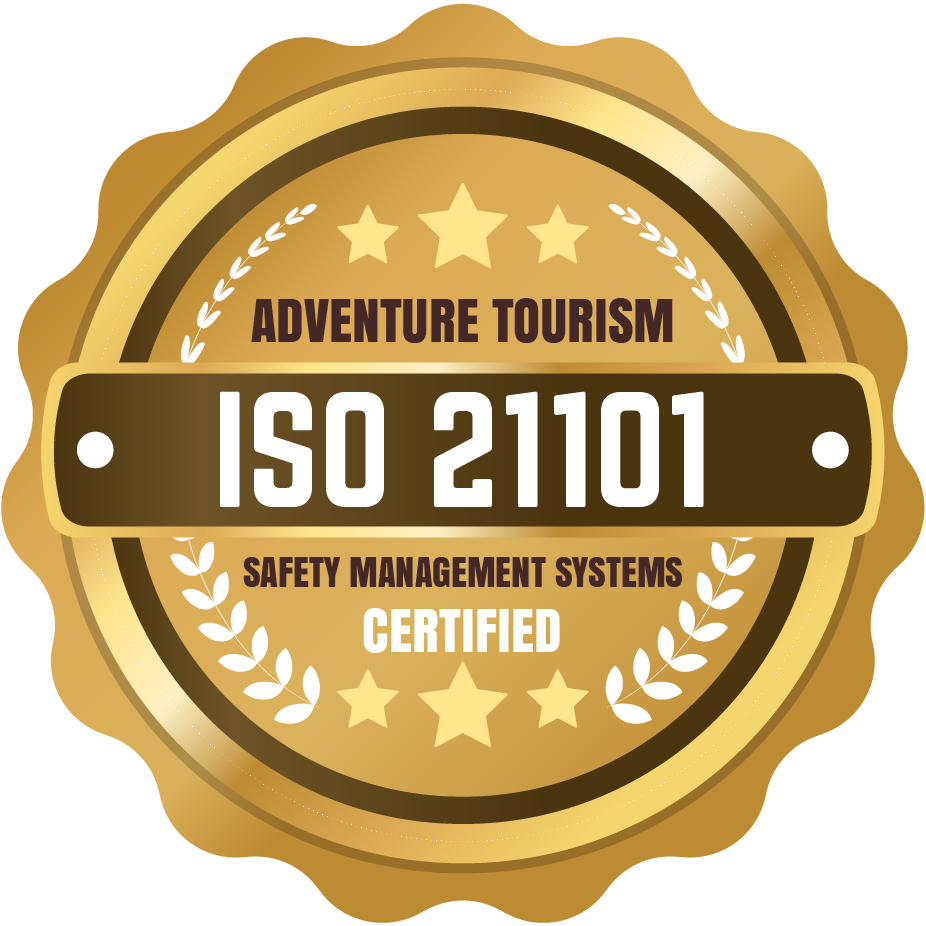
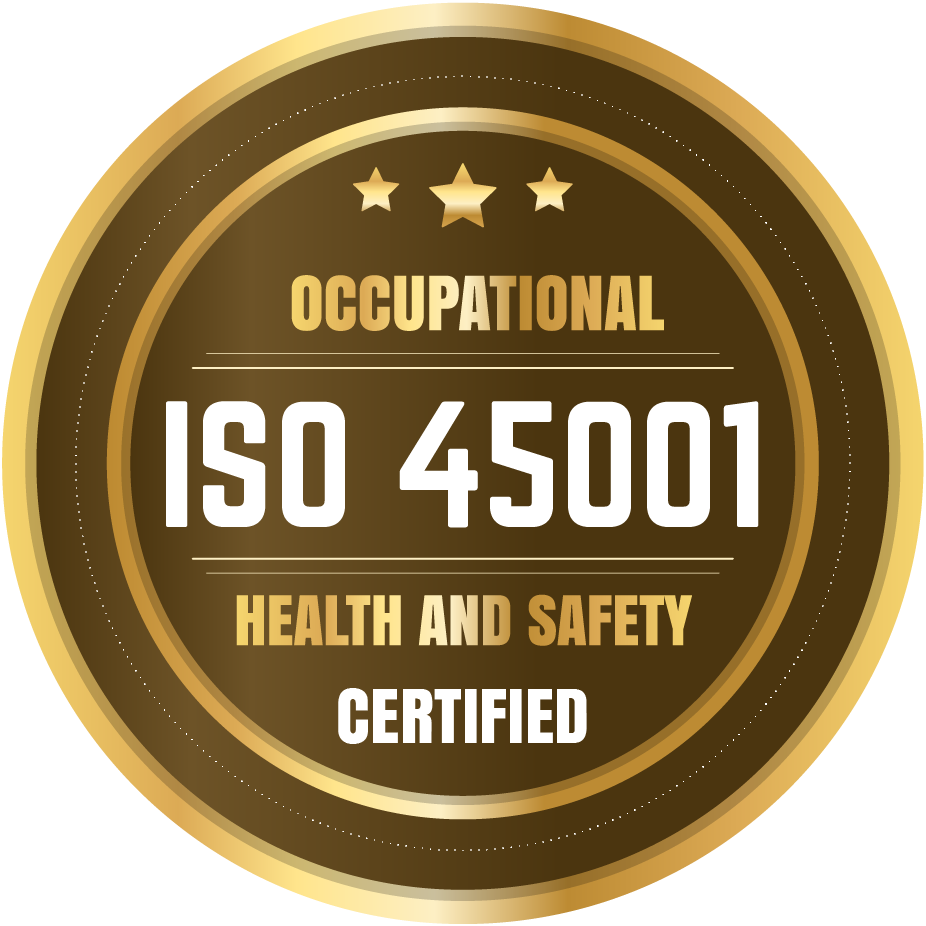
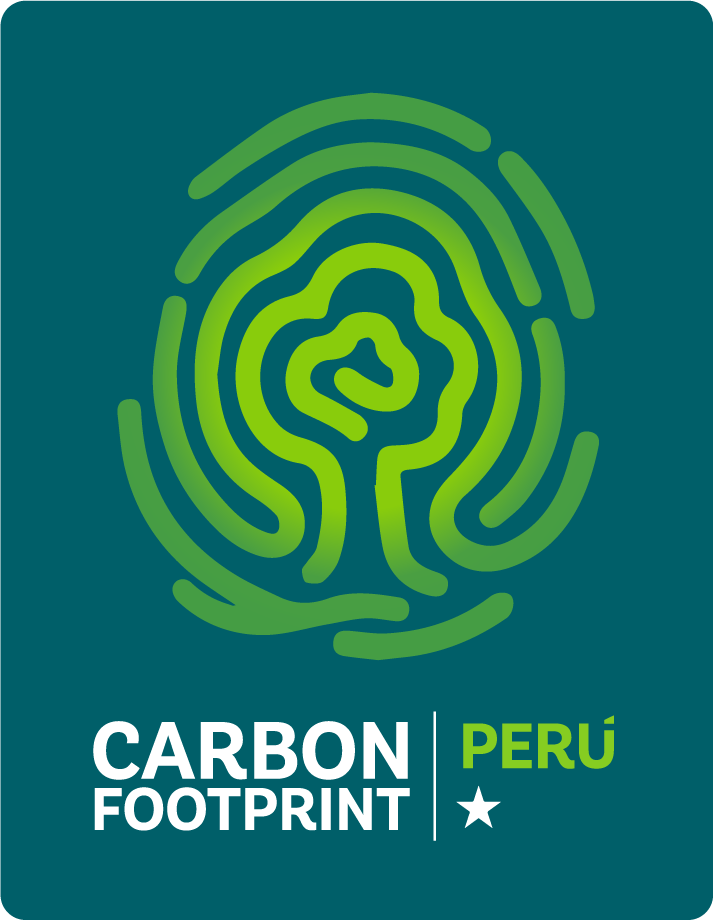












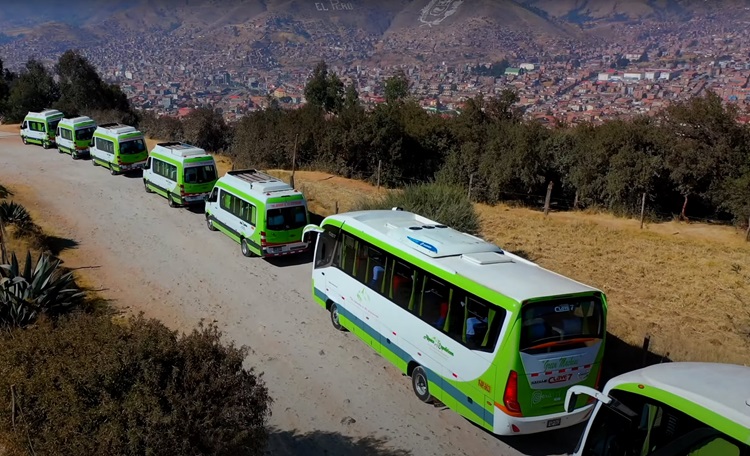
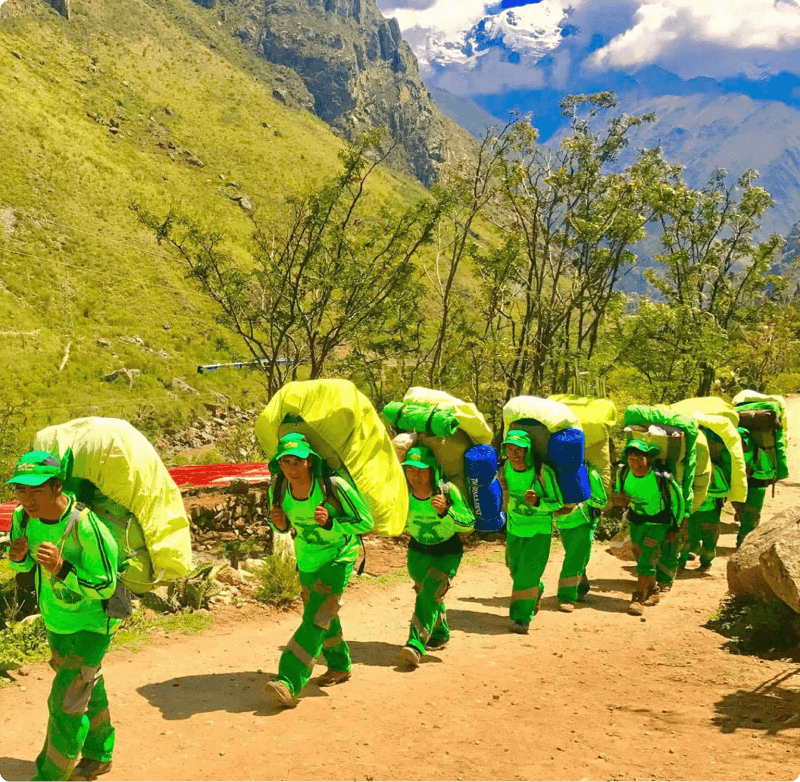 Porters will carry up to 7 kg of your personal items, which must include your sleeping bag and air mat (if you bring or rent one). From us, these two items weigh a combined total of 3.5 kg.
Porters will carry up to 7 kg of your personal items, which must include your sleeping bag and air mat (if you bring or rent one). From us, these two items weigh a combined total of 3.5 kg.